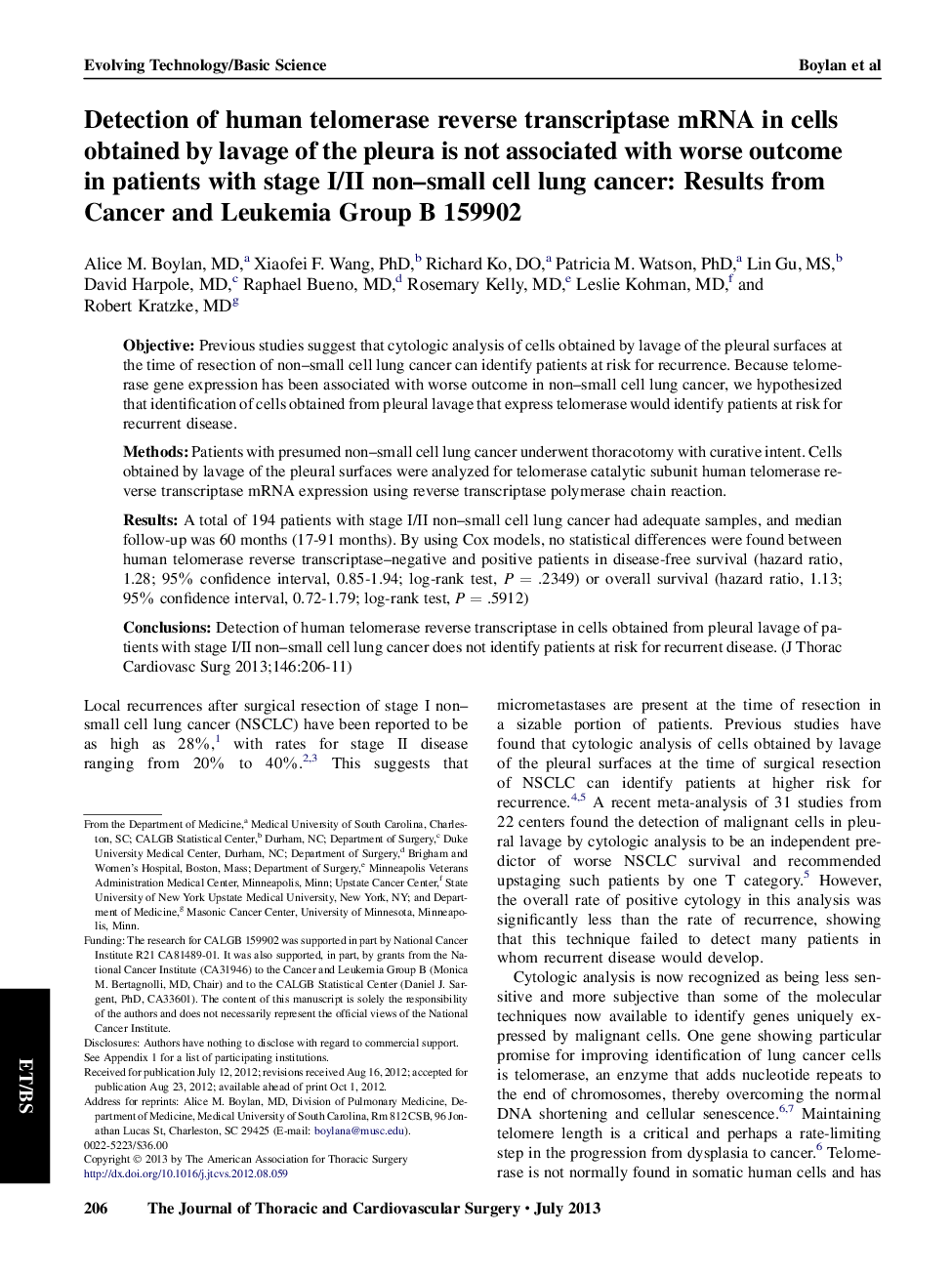| Article ID | Journal | Published Year | Pages | File Type |
|---|---|---|---|---|
| 2981057 | The Journal of Thoracic and Cardiovascular Surgery | 2013 | 6 Pages |
ObjectivePrevious studies suggest that cytologic analysis of cells obtained by lavage of the pleural surfaces at the time of resection of non–small cell lung cancer can identify patients at risk for recurrence. Because telomerase gene expression has been associated with worse outcome in non–small cell lung cancer, we hypothesized that identification of cells obtained from pleural lavage that express telomerase would identify patients at risk for recurrent disease.MethodsPatients with presumed non–small cell lung cancer underwent thoracotomy with curative intent. Cells obtained by lavage of the pleural surfaces were analyzed for telomerase catalytic subunit human telomerase reverse transcriptase mRNA expression using reverse transcriptase polymerase chain reaction.ResultsA total of 194 patients with stage I/II non–small cell lung cancer had adequate samples, and median follow-up was 60 months (17-91 months). By using Cox models, no statistical differences were found between human telomerase reverse transcriptase–negative and positive patients in disease-free survival (hazard ratio, 1.28; 95% confidence interval, 0.85-1.94; log-rank test, P = .2349) or overall survival (hazard ratio, 1.13; 95% confidence interval, 0.72-1.79; log-rank test, P = .5912)ConclusionsDetection of human telomerase reverse transcriptase in cells obtained from pleural lavage of patients with stage I/II non–small cell lung cancer does not identify patients at risk for recurrent disease.
